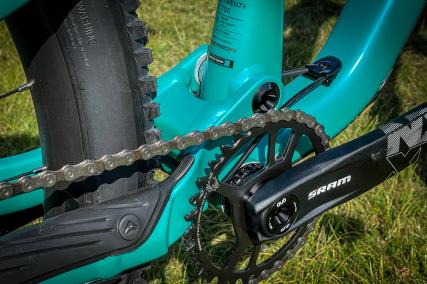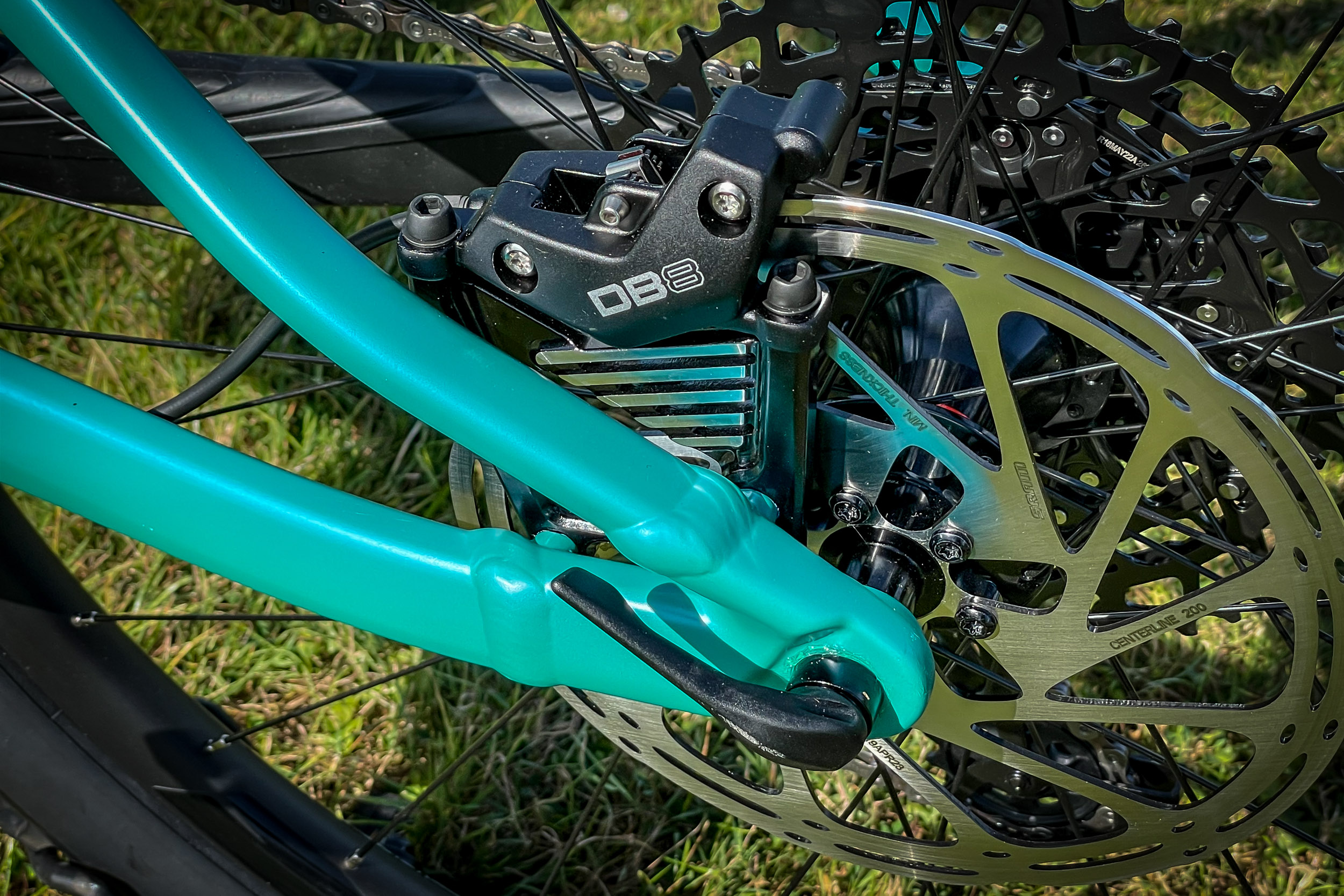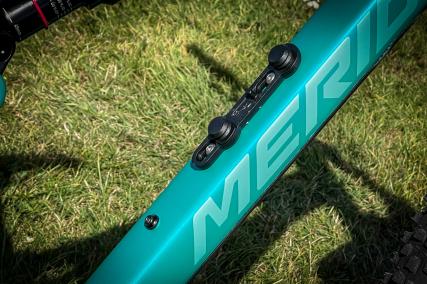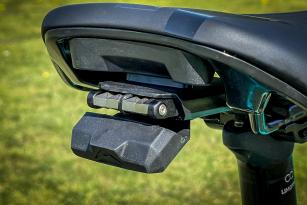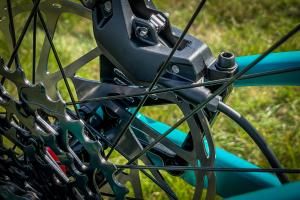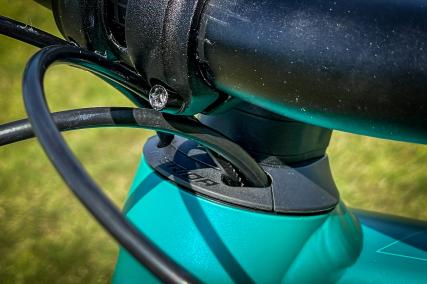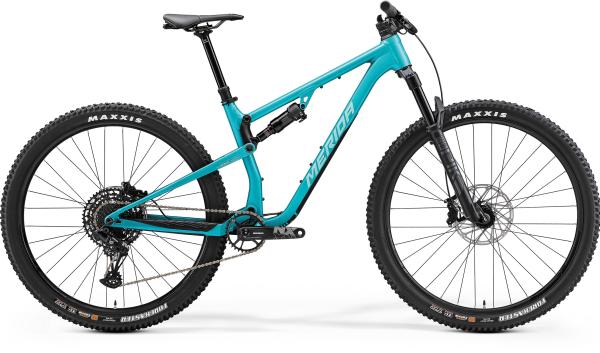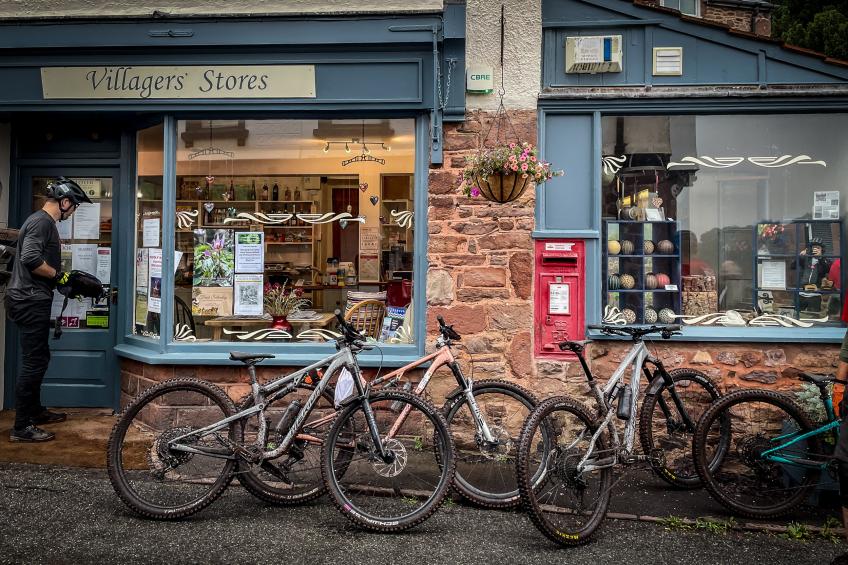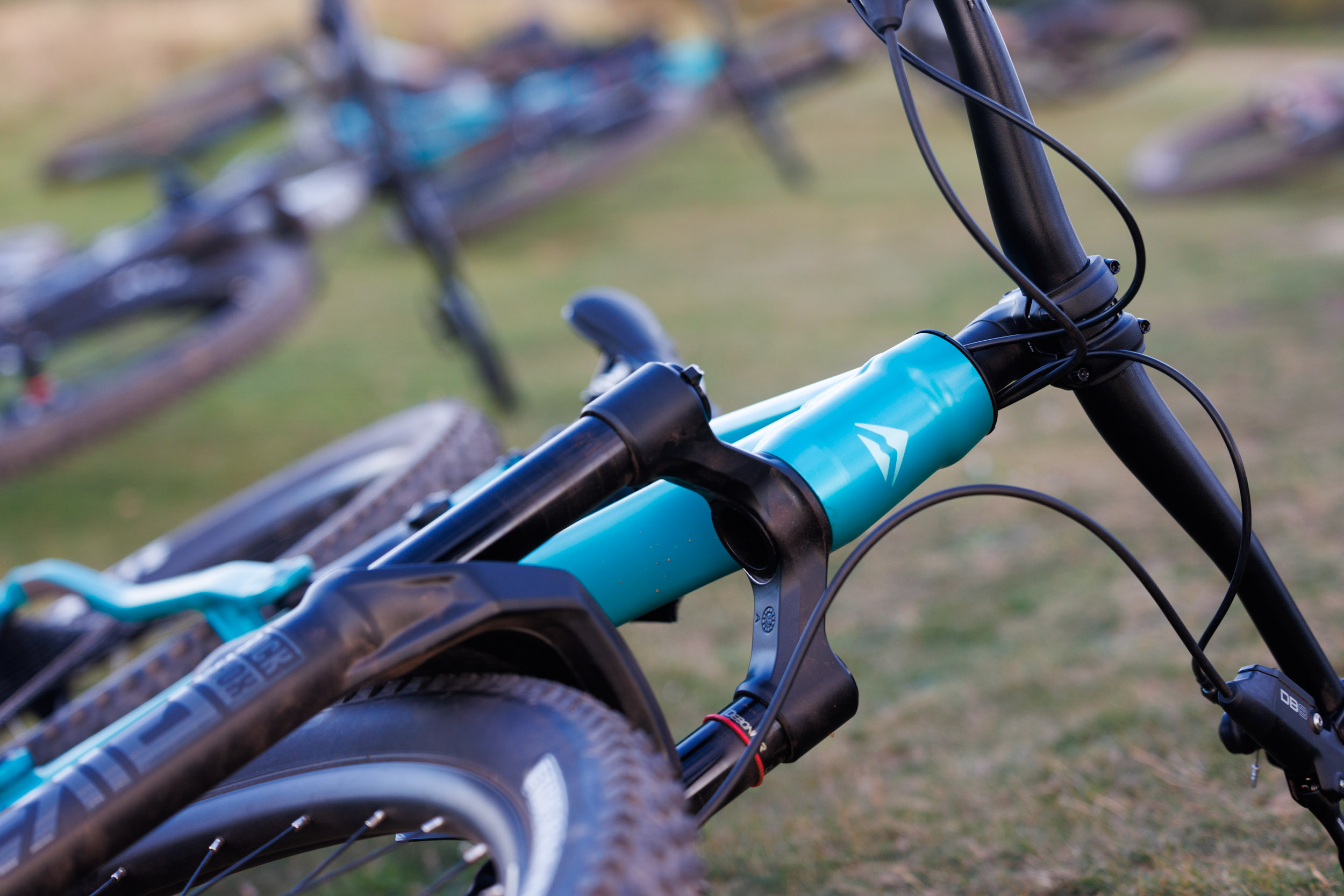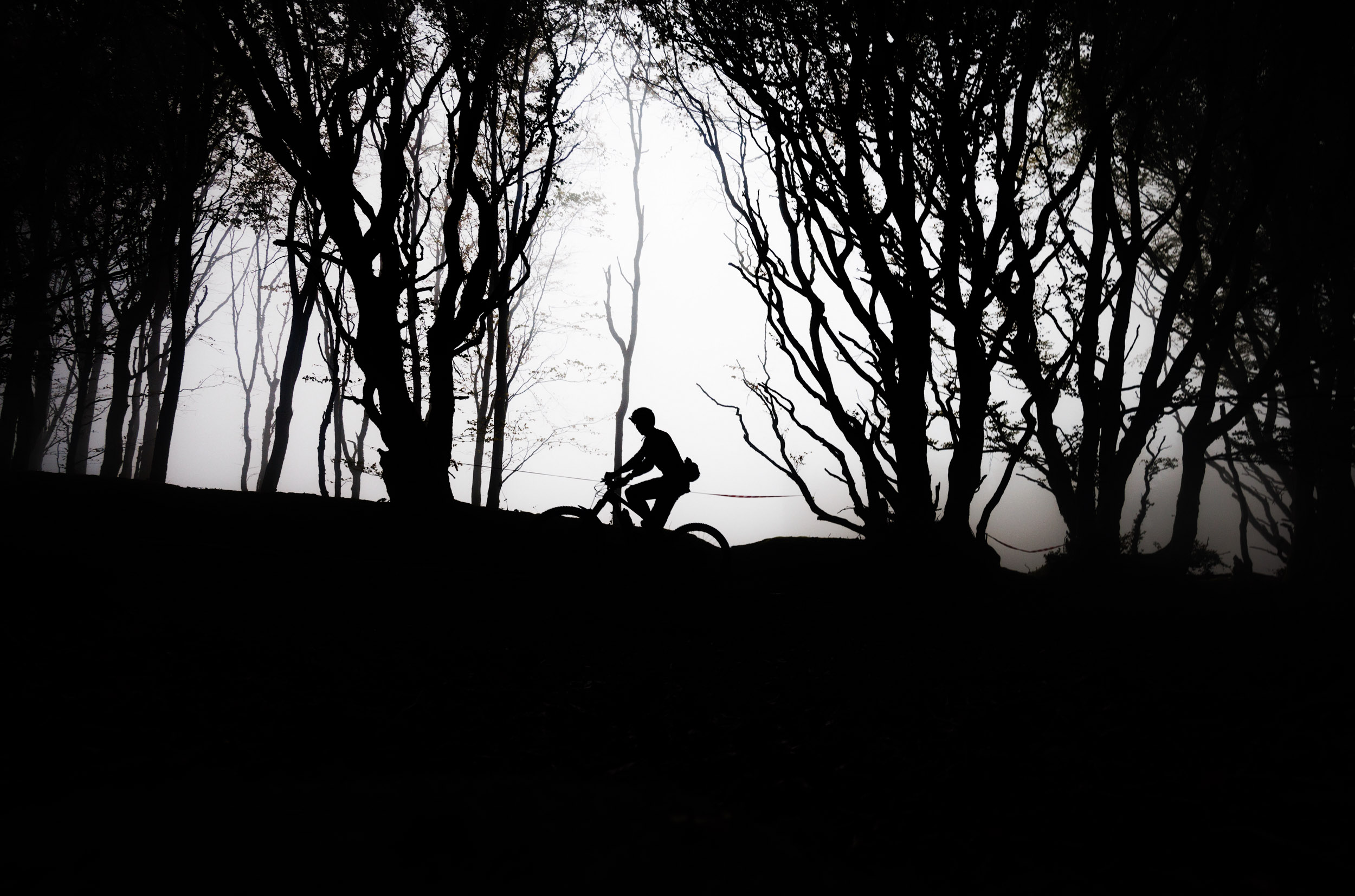
Merida One-Twenty First Ride
29.09.23 09:08 542023-09-29T09:08:00+02:00Text: Ralf Hauser (translated by AI)Photos: Paul Box, Merida, NR22Everything new with the One-Twenty: with 130 mm of travel, a new frame design, and modern geometry, the aluminum trail bike is supposed to demonstrate even better all-around characteristics. We were allowed to test it under epic conditions...29.09.23 09:08 582023-09-29T09:08:00+02:00Merida One-Twenty First Ride
29.09.23 09:08 582023-09-29T09:08:00+02:00 Ralf Hauser (translated by AI) Paul Box, Merida, NR22Everything new with the One-Twenty: with 130 mm of travel, a new frame design, and modern geometry, the aluminum trail bike is supposed to demonstrate even better all-around characteristics. We were allowed to test it under epic conditions...29.09.23 09:08 582023-09-29T09:08:00+02:00Confusing: Merida's model names, which used to aptly reflect their suspension travel, are increasingly deviating from this in their lineup. Also the new One-Twenty.
This no longer has 120 mm of travel; the new 29er now rolls with 130 mm at the front and back over forest trails. So, only trademark and historical reasons remain for the naming, but we don't want to dwell on that.
Fulfilling the task list was no easy feat for the developers of the new One-Twenty.
It was supposed to be a good climber with competent downhill capabilities, and moreover, affordable. A trail bike with short travel, for quite rough terrain with impressive all-round characteristics, then. A smart component package had to fit into the overall picture just as much as modern geometry and a robust frame.
Positioned between the Ninety-Six and the One-Forty, the One-Twenty offers with its 130 mm of travel, despite all booming trends, still the optimal value between suspension comfort and efficiency for many riders. And this starting at a recommended retail price of €1,999.
The Frame
The new suspension design of the One-Twenty LITE V-frame is based on a single pivot construction with lever linkage of the horizontally mounted shock.
The so-called P-FLEX Flexstay eliminates an additional bearing near the dropout on the seat or chain stay, in favor of higher stiffness, weight reduction, and ease of maintenance. The natural flex of the aluminum frame material and the special shape of the tubes accommodate the slight change in position of the rear assembly elements during the suspension process.
To prove the frame's durability, it underwent excessive test cycles on the test benches of the Zedler Institute.
As a final result, the ASTM certification is even raised a level compared to the predecessor model and now meets category 4 standards of the Enduro class. The first owner can even look forward to a lifetime warranty.
The frame weight for size M is, according to the manufacturer, 3,100 g without spring element, seat clamp, derailleur hanger, and axle, plus/minus 5%.
The cable routing goes through the headset into the interior of the frame. There, cable channels are housed, accordingly, the cables should behave noiselessly while riding. A service port on the lower part of the downtube aids in laying the cables inside the frame correctly and without much effort.
An optional ISCG-mount allows the installation of chain guides. At the rear, the maximum recommended tire width is 2.5". Sram's UDH standard serves as the derailleur hanger. A downtube protector is pulled almost over the full length of the downtube.
The downtube itself has several mounting points for a bottle cage, so it can be mounted either higher or lower as desired. Those who choose the higher position can attach a second bottle on the seat tube. Depending on the frame size and the shape of the bottles, the maximum fitting sizes can vary (500 ml bottles will fit, in any case).
On the reinforcement bridge of the seat stays, a long fender can be mounted.
The quick release lever of the Boost 12 x 148 mm rear axle also acts as a 4 mm and 6 mm Allen wrench, with which all screws on the frame can be tightened except for the main bearing. On the upper part of the frame triangle, a tool holder or similar can be mounted on the underside of the top tube.
The brake adapter mounted on the inside of the rear triangle follows the 180 Direct Mount standard.
Geometry
| Size | XShort | Short | Mid | Long | XLong |
| Seat Tube Length (mm) | 400 | 410 | 425 | 445 | 470 |
| Head Tube Length (mm) | 95 | 100 | 105 | 110 | 115 |
| Top Tube Length (mm) | 548 | 569 | 590 | 611 | 632 |
| Chainstay Length (mm) | 435 | 435 | 435 | 435 | 435 |
| Steering Angle | 66° | 66° | 66° | 66° | 66° |
| Seat Angle | 78.5° | 78.5° | 78.5° | 78.5° | 78.5° |
| Stack (mm) | 604 | 609 | 613 | 618 | 622 |
| Reach (mm) | 425 | 445 | 465 | 485 | 505 |
The new One-Twenty integrates into Merida's so-called Agilometer frame concept, which was introduced with the latest generations of their bikes.
To offer riders more choices regarding frame sizes, the defining factor for size is primarily the length, or the reach, rather than the length of the seat tube. The latter is designed to be as short as possible, to allow shorter riders, who prefer the riding stability of longer frames, to use them without having to forgo the benefits of telescopic posts with a lot of travel. At the same time, taller individuals have better chances to equip their bike with a dropper post with the longest possible travel.
A frame size has also been added to the One-Twenty lineup. Thus, choices range from XShort, Short, Mid, Long, and XLong - from 425 mm to 505 mm reach. Compared to the predecessor model, the reach has grown significantly, while it is slightly shorter compared to the current One-Sixty.
For the frame sizes XShort and Short, a telescopic post up to 150 mm length can be completely retracted into the frame, for Mid 170 mm, for Long and XLong 200 mm.
Compared to the predecessor model, the seat angle has increased significantly from 75.5 to a steep 78.5 degrees for a more efficient pedaling position. Although the reach is now longer than on the old One-Twenty, this even makes the top tube length shorter. So, there's no need to worry about having to stretch too much when sitting on the bike.
The steering angle has been flattened by 1.3 degrees to 66 degrees for greater stability. With a length of 435 mm, the chainstays are very short, especially for a 29" rear wheel.
Kinematics
With the aim of better supporting an aggressive riding style as well as, if necessary, air shocks with a higher air volume, the leverage ratio of the One-Twenty has been made more progressive.
The characteristic curve runs degressive up to the recommended sag value of 30%, and then becomes progressively steeper towards the end for bottom-out protection.
Interestingly, the overall progression is even slightly higher than that of the One-Forty, to be able to hold its own in demanding situations despite the shorter travel.
The shock size is 190 x 45 mm. This results in an average leverage ratio of 2.89:1.
The anti-squat value at the sag point is just over 100% and also moves in the middle suspension range in a range between 95 and 100%, to maintain high pedaling efficiency with little bobbing. After that, the curve dips down a bit more to be able to react more actively to stronger impacts.
A similar curve is presented by the Anti-Rise. If it is just under 100% at the Sag point for a neutral braking balance, the curve continuously dips with increasing suspension travel, to provide a more active suspension behavior.
Anyone who has trouble identifying these charts is welcome to consult our Suspension 101 for additional information.
Equipment & Models
There will be three equipment variants of the One-Twenty on the market. Starting with the One-Twenty 700, the bike that was available for our First Ride, the suspension is provided by RockShox in the form of a Pike Select and a Deluxe Select+ with lockout function. The shifting is handled by a mix of Sram's NX Eagle and SX Eagle 1 x 12. From the same manufacturer come the DB8 brakes with 4-piston technology.
The Merida Expert TR II dropper post comes in size XShort and Short with 150 mm travel, 170 mm for Mid and 200 mm for Long and XLong.
The cockpit is entirely provided by Merida. The Expert TR II handlebar measures 780 mm in width and 18 mm in height. The Expert eTR II stem uses 40 mm length on all frame sizes and matches exactly with the oval-shaped spacers underneath. These, in turn, work together with the Acros ICR Merida External Neck headset with internal cable routing.
The wheels consist of Novatec hubs and Merida Expert TR rims, on which run Maxxis Forekaster 29 x 2.4" tires with 3X MaxxTerra rubber compound and EXO sidewall.
Under the Proxim W400 STN saddle, a small Merida multitool is hidden.
The recommended retail price is €3,299.
Moving on to the One-Twenty 600, which has the same damper as the 700 but is equipped with a Marzocchi Z2 at the front. Shifting is done with Shimano's Deore 1 x 12 with a 10-51 range, and Deore also takes care of the braking - with a 4-piston caliper at the front and a 2-piston caliper at the rear.
On Merida Comp TR rims, once more, Maxxis Forekaster tires are mounted, in this case, however, only with Dual rubber compound.
The recommended retail price is € 2,699.
Even the most cost-effective model, the One-Twenty 500, has no need to hide. An SR Suntour XCR34 2CR fork and SR Suntour Edge Plus 2CR shock with lockout eliminate ground unevenness.
Shimano's CUES U6000 with 1 x 10 speeds and an 11-48 range should be able to easily handle a vast number of gear changes over the years, with 2-piston Shimano MT200 brakes reliably bringing the bike to a stop.
The price: € 1,999.
Basically, each model of the One-Twenty is given two color variants. In Austria, however, the One-Twenty 700 will only be available in the turquoise Silk Metallic Teal version.
First Ride(s)
I spent a total of three days on the One-Twenty 700, two of them at the Merida EX-Enduro Race in Exmoor, Great Britain. The longest day clocked in at about 1,600 meters of elevation gain, so a significant amount of elevation gain and loss was indeed recorded.
To get straight to the point: I'm not usually a fan of bikes with less suspension travel and haven't ridden such bikes for a long time. Accordingly, the One-Twenty had some convincing to do in my case.
Merida describes the focus of the One-Twenty with a 40% uphill and 60% downhill weighting.
With a stated weight of 15 kg without pedals for the One-Twenty 700, the series might not be considered lightweight, but the 29er was far from feeling like a battleship. With Maxxis Forekaster tires, it accelerated quickly and eagerly climbed elevation.
The seating position with an extra steep seat angle put efficient pressure on the pedals, and it was pleasing to see that Merida implements such angles on a trail bike in series production. Observing the members of Merida's R&D team riding, this aspect is actually not that surprising anymore...
Even when it gets really steep, the front wheel of the One-Twenty sticks to the ground in a well-controlled manner despite its short chainstays – but not least thanks to the steep seat angle. However, in such situations, I was plagued by the feeling that the lightest gear could have done with one or two more teeth on the cassette.
The chainring is nicely small with 32 teeth, but the SX Eagle cassette with an 11-50 gear ratio in combination with the 29" rear wheel can't quite keep up with other groups. Even the One-Twenty 600 seems superior in this respect with a 10-51 gear range. Those who, like me, prefer to climb at a snail's pace rather than walking in steep sections will probably not be completely happy.
Switching to a smaller 30-tooth chainring is of course an option in that case, but then in combination with the 11-tooth sprocket at the other end of the spectrum, the cadence will quickly increase during fast descents.
Equipped with a lockout function on the shock, I never felt the need to activate the lever, not even on road transfers or long forest road stretches.
Due to the spring characteristic curve, which is initially degressive, it is important to maintain the recommended sag of 30%, otherwise, you would encourage the suspension to bob unnecessarily. However, with the correct setup, the suspension behaves very neutrally, and bobbing is actually not noticeable even in the open state.
Even if you get out of the saddle and accelerate the One-Twenty in a sprint, the bike willingly converts the input into propulsion - even if it doesn't quite have the sprightliness of lighter bikes due to its weight.
When the front wheel is pointing downhill, you're indeed well situated on the One-Twenty. Of course, sitting on a bike with 130 mm of travel, you're not on a downhiller that can smooth out larger obstacles without really noticing them. However, I was still positively surprised by the shock absorption qualities.
In reality, the main area of use for the One-Twenty will probably include trails of moderate difficulty, which the bike excellently masters. But even in technically difficult sections, the suspension hardly loses control, allowing for precise tracking of the desired path.
At higher speeds, the 66-degree head angle in combination with the wheelbase did not give me – certainly also reinforced by my years of getting used to flatter angles – quite the necessary confidence to really let the bike run. To match my personal comfort factor, I switched from a size Mid to a size Long frame over the course of the days.
Thanks to Merida's frame concept with short seat tube lengths, this was possible for me even with a height of 168 cm. The only change needed was to switch to a 170 mm dropper post instead of the installed one with 200 mm of travel. The fact that with this preference, I also fell out of the recommended values of Merida's Agilometer-Chart, as was also recently mentioned with the First Ride of the One Sixty FR, should be said. However, the fact that it still worked, in my opinion, illustrates all the more impressively that Merida's modern geometry approach, where a rider can choose from different frame sizes, is the way that the entire bike industry should follow. Some companies just learn faster than others.
The RockShox Pike Select, to justify its price point, logically has to make do with the simpler Charger RC damping system compared to the top models. However, it still performs quite capably.
When faced with very rapid successive impacts, it may not keep up with the best in its class, but it always maintains good control, even when the trail is littered with larger obstacles. Normally, I was even extremely surprised at how well it managed to keep the front wheel on track at higher speeds.
The RockShox Deluxe Select+ shock performed similarly competently. The rear suspension concept and the functioning of the shock might not feel extremely active and are somewhat muted, but this very fact actually fits the character of the bike perfectly. For example, when rolling over larger roots, you definitely feel them through the suspension, yet in most cases, the large 29" rear wheel does not lose control.
In those cases where the bike broke out on either loose gravel or extremely muddy ground, it was easily reined in once the tires found grip on more solid ground. In this context, a fun, long drift in the mud on both wheels will probably stay in my memory for a long time.
Switching to more downhill-oriented tires makes a big difference. With a Maxxis Assegai 2.5" with a soft rubber compound and a 2.4" wide DHR II on the rear, not only was the suspension's absorption behavior positively supported, but it also allowed the bike to be thrown through corners with a considerable extra dose of confidence.
Therefore, in my opinion, the One-Twenty will not be the ideal enduro race bike - and it doesn't aim to be. But the fact that the One-Twenty has received a Category 4 rating underlines Merida's confidence in the bike and opens up a very broad spectrum of possibilities if you want to explore this avenue.
The rear triangle coped well with various scenarios without giving the impression that the travel was maxed out. Only medium-height drops at high speed into flat resulted in a relatively hard bottom-out. However, there was still no feeling of the ankles buckling, which speaks for the progressive tuning of the suspension.
The longer the frame, the more the front of the bike needs to be loaded, as due to the very short chainstays more weight is over the rear wheel. Nonetheless, the One-Twenty does not feel unbalanced.
Those who enjoy winding trails with quick load and direction changes will have fun with this corner chaser. If one had to forcefully steer the rear wheel into a curve to catch a tight turn at higher speed, a light tap on the rear brake was enough to encourage the larger rear wheel to do so.
Having moved through pouring rain, flowing streams, and muddy curves on the trails for hours, one develops a special relationship – good or bad – with the bike that accompanies one on such adventures.
In the case of the One-Twenty, I must admit that – despite its limited travel – it has indeed grown on me over the short period. That's really all there is to say!










